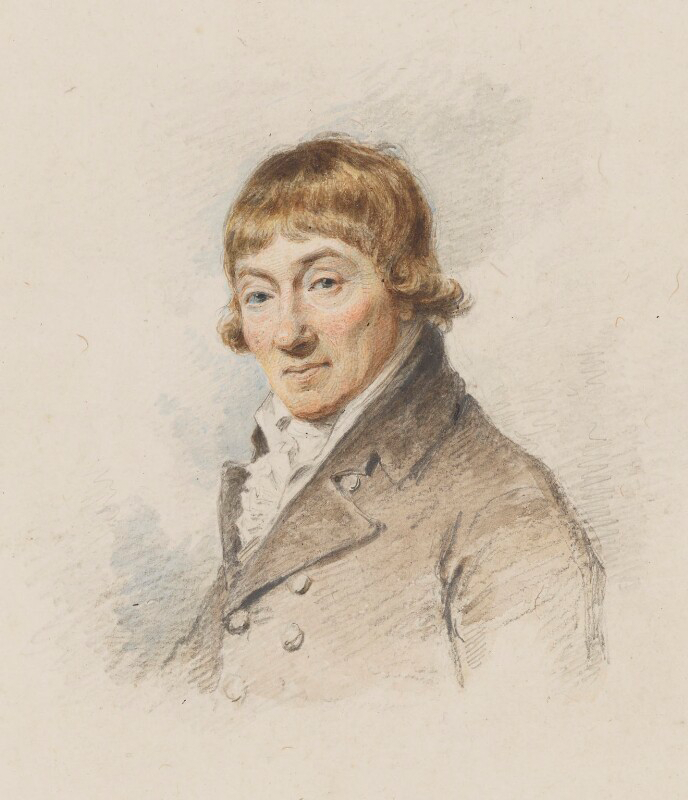Citation
Chicago:
Aimee Marcereau DeGalan, “Henry Edridge, Portrait of a Man, ca. 1790,” catalogue entry in Aimee Marcereau DeGalan, Blythe Sobol, and Maggie Keenan, The Starr Collection of Portrait Miniatures, 1500–1850: The Collections of the Nelson-Atkins Museum of Art, vol. 2, ed. Aimee Marcereau DeGalan (Kansas City, MO: Nelson-Atkins Museum of Art, 2024), https://doi.org/10.37764/8322.5.1360.
MLA:
Marcereau DeGalan, Aimee. “Henry Edridge, Portrait of a Man, ca. 1790,” catalogue entry. Aimee Marcereau DeGalan, Blythe Sobol, and Maggie Keenan. The Starr Collection of Portrait Miniatures, 1500–1850: The Collections of the Nelson-Atkins Museum of Art, edited by Aimee Marcereau DeGalan, vol. 2, Nelson-Atkins Museum of Art, 2024. doi: 10.37764/8322.5.1360.
Artist's Biography
See the artist’s biography in volume 4.
Catalogue Entry
In this portrait, Henry Edridge captures the likeness of an unidentified middle-aged man. The sitter is clad in a gold jacket with a chartreuse-striped vest and white cravat: A cravat, the precursor to the modern necktie and bowtie, is a rectangular strip of fabric tied around the neck in a variety of ornamental arrangements. Depending on social class and budget, cravats could be made in a variety of materials, from muslin or linen to silk or imported lace. It was originally called a “Croat” after the Croatian military unit whose neck scarves first caused a stir when they visited the French court in the 1660s., set against a subtly modulated brown background. The traces of white powder on the man’s upper collar suggest he powdered his hair, a common practice of the era, contrasting with the darker brown shade of his eyebrows.
Edridge’s technique in rendering the man’s coat, with its rich color and textured paint application, particularly in the cravat, exhibits a fluidity reminiscent of Samuel Shelley (English, 1756–1808), suggesting a possible influence.1See John Murdoch, Jim Murrell, Patrick J. Noon, and Roy Strong, The English Miniature (New Haven and London: Yale University Press, 1981), 194. Both employ a highly gum arabic: Derived from the sap of the African acacia tree, gum arabic was commonly used to bind watercolor pigments with water. In addition to its use as a binder, miniaturists capitalized on its glossy effect to create areas of highlight with larger quantities of gum. As with ivory, its availability benefited from trade routes that were expanding due to colonialism and the Atlantic slave trade. surface. Despite the absence of Edridge’s signature or a backing card,2There are some remnants of adhesive on the verso of the miniature, indicating that a backing was removed at some point, which may have been inscribed. See conservation report in NAMA curatorial files. the distinct hallmarks of his artistic style are discernable.

Interestingly, the sitter bears a slight resemblance to George Chalmers (Scottish, 1742–1825), a Scottish-born British colonial administrator, writer, and antiquarian whom Edridge sketched in watercolor in 1809 (Fig. 1). Both portraits share a distinctive close-cropped hairstyle with longer sides, although their eye colors differ: Chalmers with piercing blue eyes and the unidentified sitter with brown eyes. Nevertheless, Edridge renders their aging flesh in a similar manner, highlighting the hollows of their cheeks and eye sockets and the distinctive crease between the lower lip and chin. Although the identity of the Nelson-Atkins sitter remains unknown, Edridge’s likeness provides a lasting record for posterity.
Notes
-
See John Murdoch, Jim Murrell, Patrick J. Noon, and Roy Strong, The English Miniature (New Haven: Yale University Press, 1981), 194.
-
There are some remnants of adhesive on the verso of the miniature, indicating that a backing was removed at some point, which may have been inscribed. See conservation report in NAMA curatorial files.
Provenance
Mr. John W. (1905–2000) and Mrs. Martha Jane (1906–2011) Starr, Kansas City, MO, by 1958;
Their gift to The Nelson-Atkins Museum of Art, Kansas City, MO, 1958.
Exhibitions
The Starr Foundation Collection of Miniatures, The Royal Ontario Museum, Toronto, December 8, 1972–January 14, 1973, no cat., no. 181, as Unknown Man.
References
Ross E. Taggart, The Starr Collection of Miniatures in the William Rockhill Nelson Gallery (Kansas City, MO: Nelson Gallery-Atkins Museum, 1971), no. 181, p. 62, (repro.), as Unknown Man.
No known related works at this time. If you have additional information on this object, please tell us more.